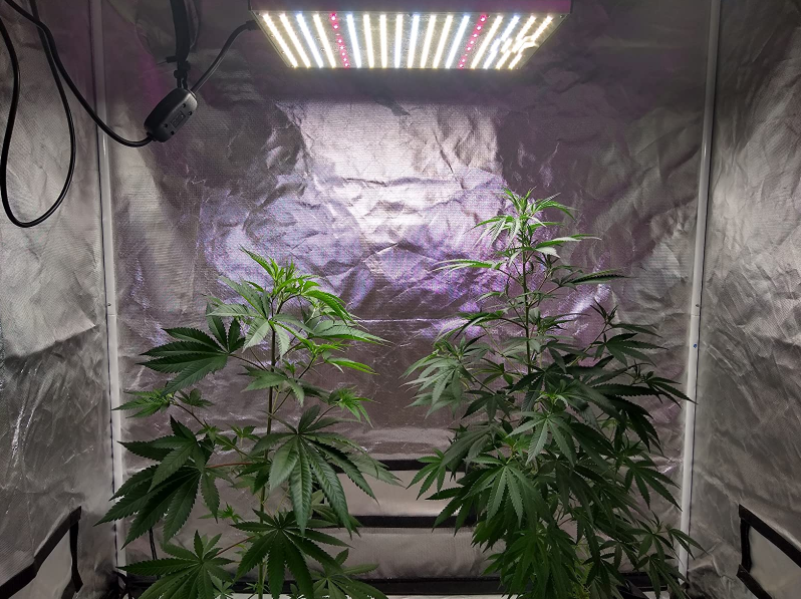Grow tents come in plenty of shapes and sizes. They are being marketed to indoor growers with claims ranging from “good to have” to “a necessity”. How important are they, really? Is a grow tent necessary? How does a grow tent compare to a closet? Is a grow tent only necessary for cannabis growers or can vegetable, tomato, and pepper growers also have use of it? Or is growing without a tent just as effective? Here’s our take on this matter.
We have grown plants in all kinds of places: inside grow tents, closets, garages, shelves, greenhouses, and out in the open. When growing outdoors there’s obviously no point in using a grow tent as it would block sunlight. But indoors and when using artificial lights it’s a different story. Grow tents have several benefits for indoor gardening:
Pros with using a grow tent:
– Contains light within the tent
– Reflects light from its inner walls onto plants
– Contains smell (somewhat)
– Makes it easier to regulate temperature and humidity
– Durable and reusable for many, many years
– Easy assemble, disassemble, and store
Cons with using a grow tent:
– Bulky, occupies space
– Comes with an upfront cost
Alternatives to a grow tent:
– White walls
– Mylar bits
– Aluminium foil
In our opinion, the pros outweigh the cons. This is especially true if the indoor grow is in an open space, a living room, for example. Grow lights typically emit a lot of light with high intensity and if spending significant time in the same space as the grow light, its emitted light will be a distraction.
A tent will also contain the smell of plants and with a carbon filter and controlled ventilation there’s minimal smell leakage. For tomatoes this is not an issue but when growing marijuana, the smell can be overwhelming or even an issue. Grow tents are not 100% airtight but they still contain smell, humidity and temperature fairly well. Tents have a large zip door and two smaller holes, one at the bottom and one at the top, for air circulation so its inner environment can be regulated.
Our biggest reason for using a grow tent is, however, because of its reflective surface. As the light emitted from any light source will flow over a large area, a lot of it would go wasted without a tent. As indoor growers, we want as much as possible of the emitted light from a grow lamp to land on our plants. After all, it is light that drives photosynthesis. The more light we focus on our plants the quicker they will grow.
With that said, there are other ways to reflect light. White painted walls in a closet work nearly as good as the reflective mylar walls of a grow tent. Mylar walls reflect about 90-97% light while white walls reflect around 70-90%.
Buying a roll of mylar instead of a grow tent is also an option. Wrap the roll around your plants or cut out pieces and fix them to a frame to build your own DIY grow tent.
As a last resort, aluminium foil also has good reflective properties. In a pinch or on a budget, this is a decent substitute.
Keep in mind though that a reflective surface should be as straight (not wrinkly) as possible. Wrinkles reflect light at an angle and the photons might scatter if the reflective material is noticeably wrinkly or uneven.
Hope this helps and happy growing! View some nice grow lights here: Shop


